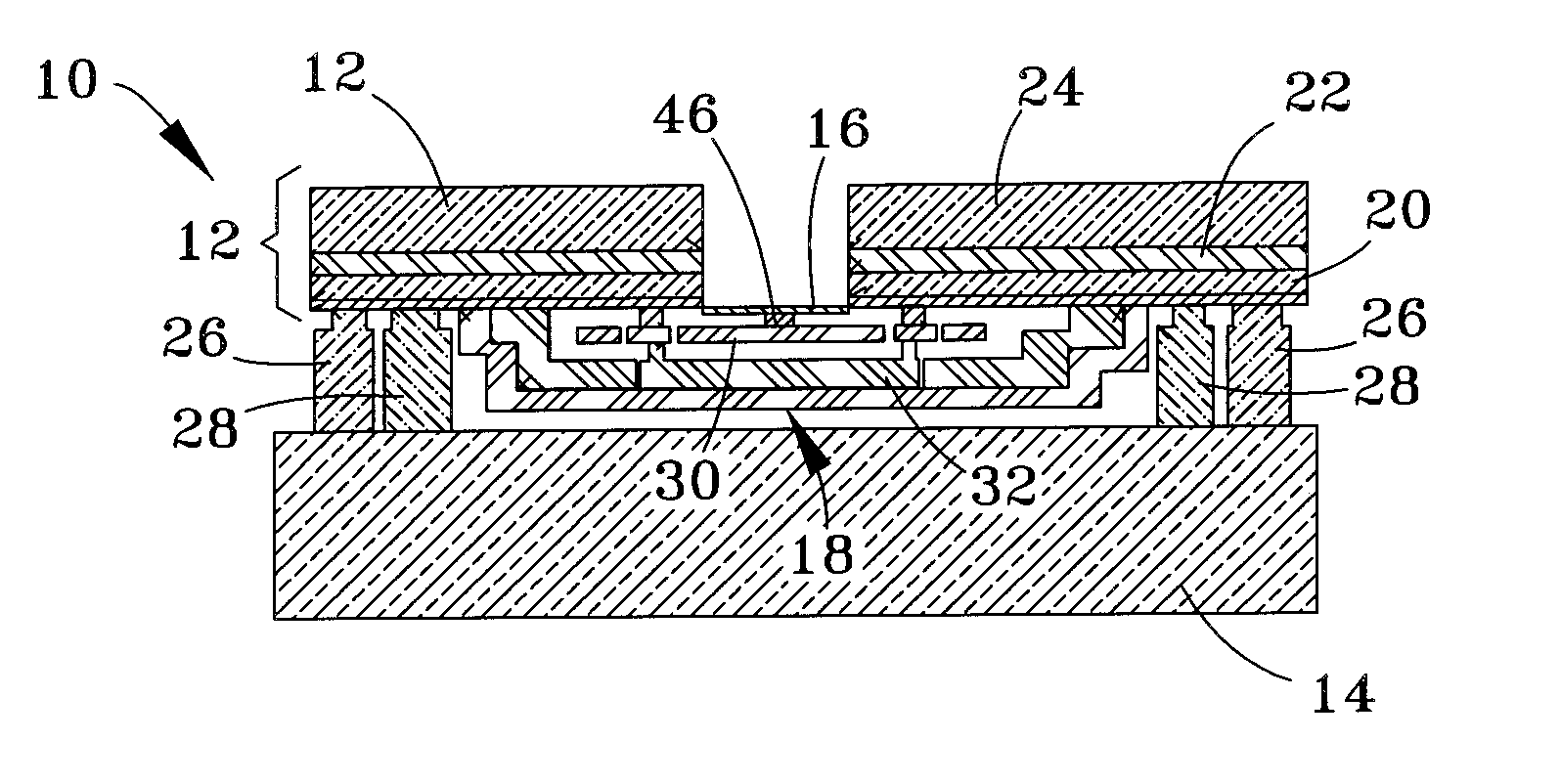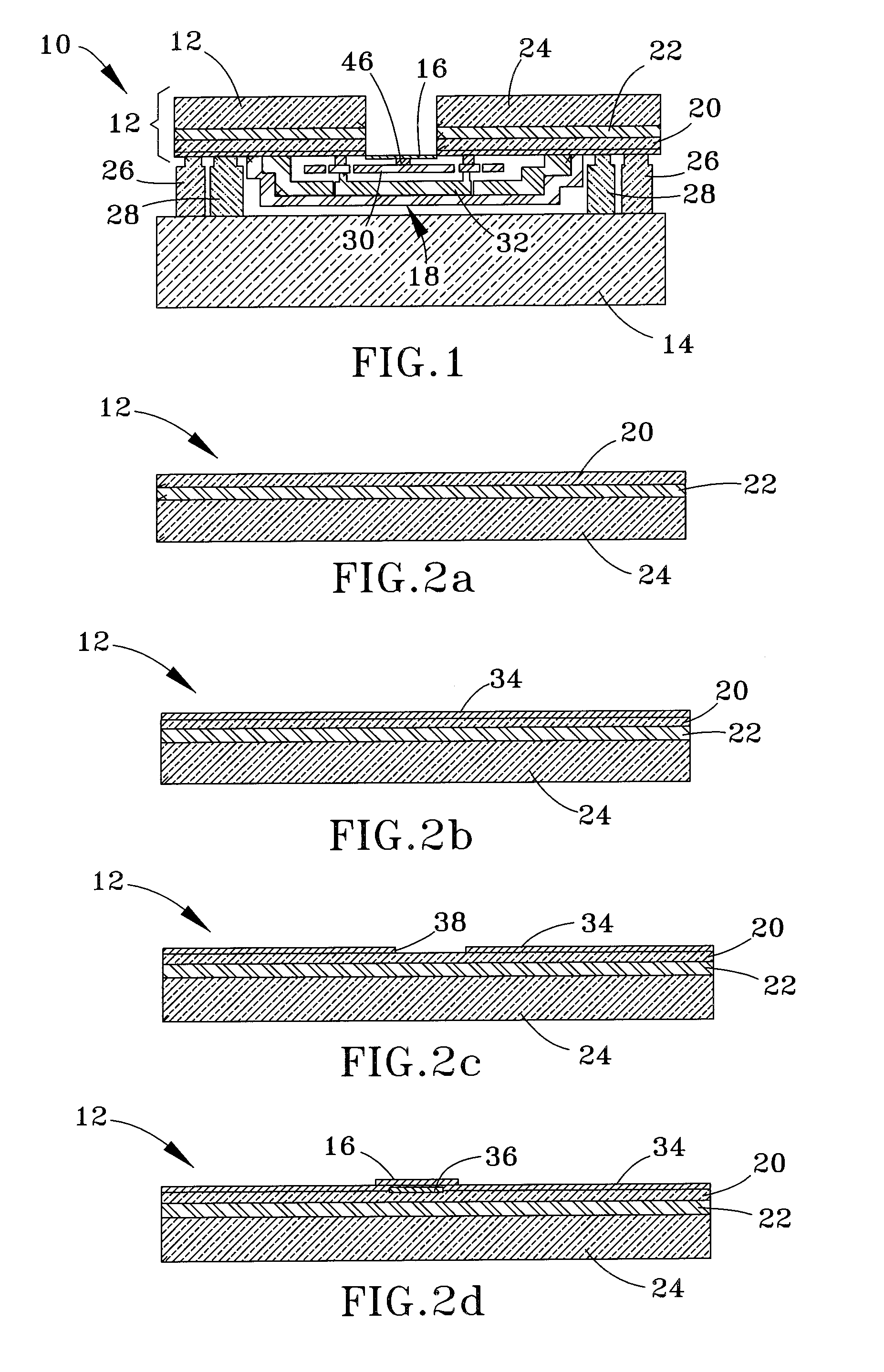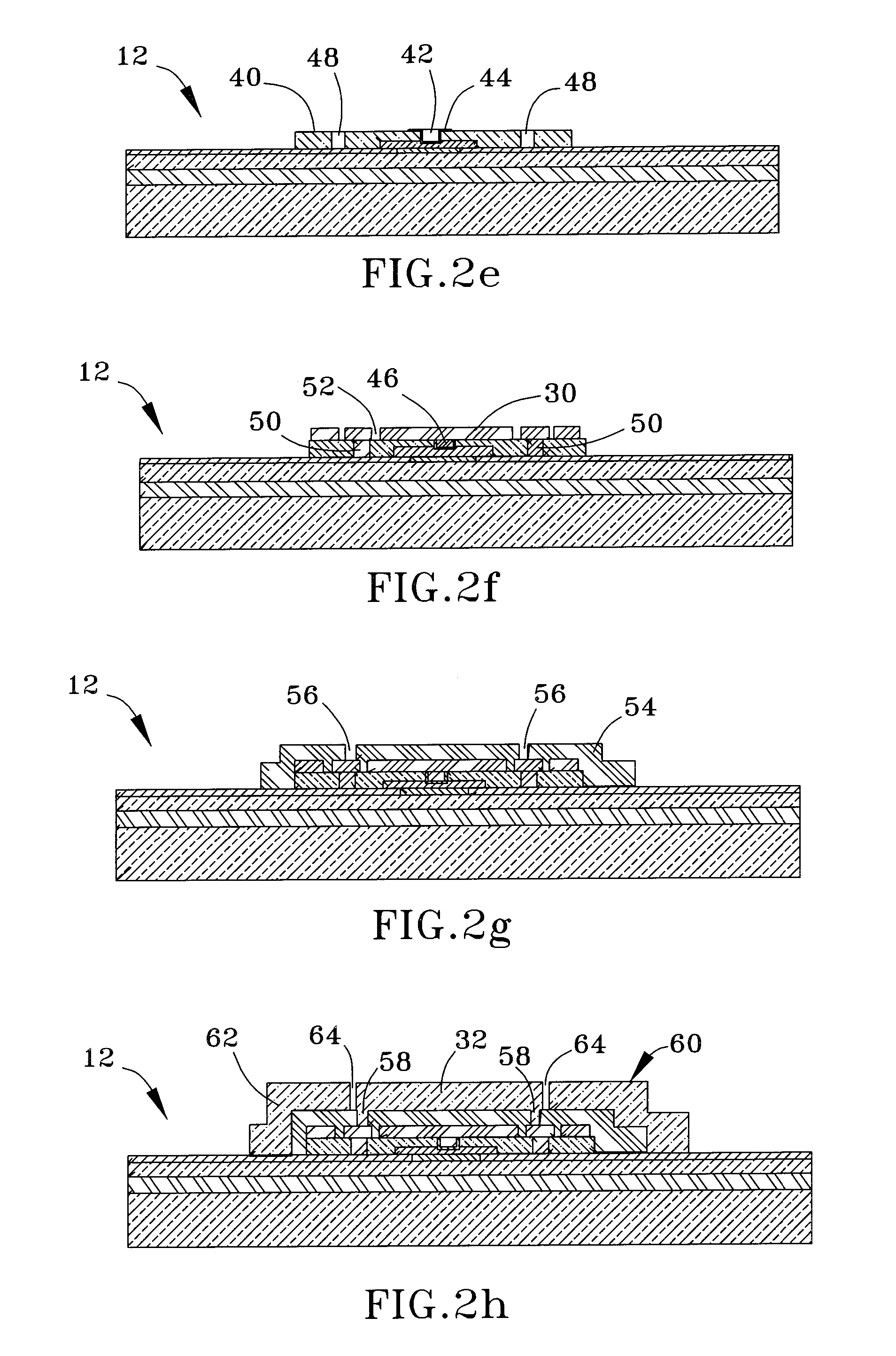Capacitive pressure sensor and method therefor
a technology of capacitance sensor and capacitance sensor, which is applied in the direction of fluid pressure measurement, electrolytic capacitor, instruments, etc., can solve the problems of inability to achieve the effect of reducing increasing the size of the sensor, and being susceptible to parasitic capacitan
- Summary
- Abstract
- Description
- Claims
- Application Information
AI Technical Summary
Benefits of technology
Problems solved by technology
Method used
Image
Examples
Embodiment Construction
[0016]Illustrated in FIG. 1 is a capacitive pressure sensor 10 within the scope of the present invention, while FIGS. 2a through 2n represent suitable steps for its fabrication. The drawings are drawn for purposes of clarity when viewed in combination with the following description, and therefore are not necessarily to scale. It should also be noted that terms such as “upper,”“lower,”“topside,” and “backside” are in reference to the sensor 10 as shown in the Figures, and are not limitations to the sensor 10 or its use.
[0017]In FIG. 1, an SOI wafer 12 carrying a pressure-sensing diaphragm 16 and a mechanical capacitor 18 are shown bonded to a second wafer 14 carrying interface circuitry (not shown) for the capacitor 18. According to a preferred implementation of the invention, the wafer 14 is a CMOS wafer, and will be referred to as such in the following discussion. As is conventional, the SOI wafer 12 is shown as including an electrically-conductive (e.g., doped silicon) device laye...
PUM
| Property | Measurement | Unit |
|---|---|---|
| thicknesses | aaaaa | aaaaa |
| thicknesses | aaaaa | aaaaa |
| thicknesses | aaaaa | aaaaa |
Abstract
Description
Claims
Application Information
 Login to View More
Login to View More - R&D
- Intellectual Property
- Life Sciences
- Materials
- Tech Scout
- Unparalleled Data Quality
- Higher Quality Content
- 60% Fewer Hallucinations
Browse by: Latest US Patents, China's latest patents, Technical Efficacy Thesaurus, Application Domain, Technology Topic, Popular Technical Reports.
© 2025 PatSnap. All rights reserved.Legal|Privacy policy|Modern Slavery Act Transparency Statement|Sitemap|About US| Contact US: help@patsnap.com



